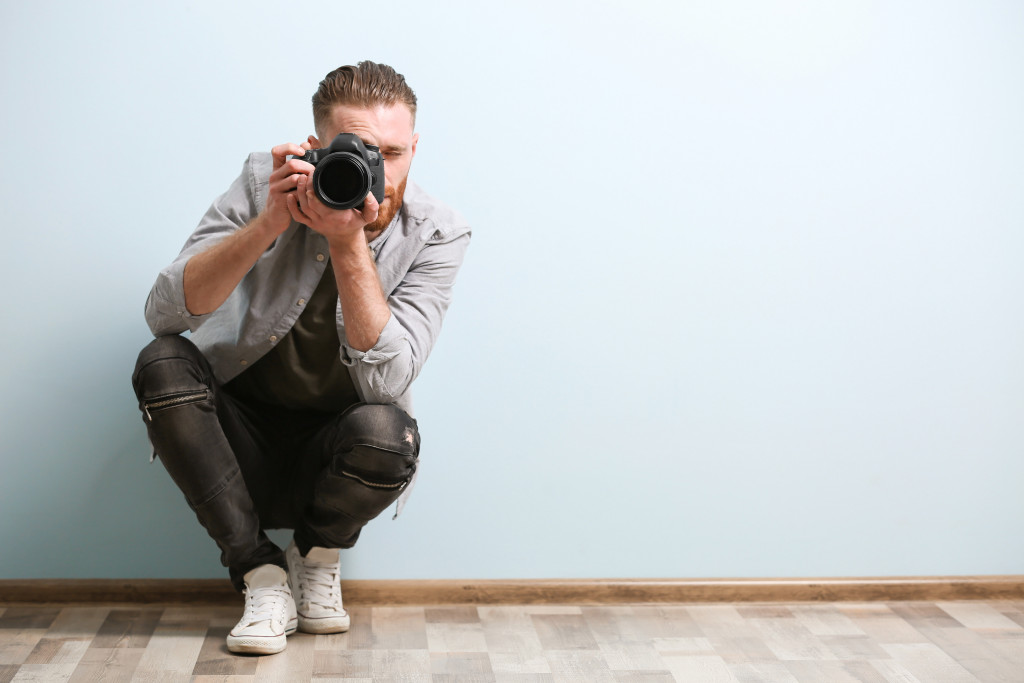Many of us want to implement this wow element in our photos. Photography effects are an excellent technique to achieve this objective. Learn the fantastic effects of photography and how you can easily apply them to your shots. These are the qualities that outstanding photographers know inside and outside to take action when the time comes to take winning photographs.
Captivate your Audience with Reflection Pictures
There are several places where reflections can be found. The first thing generally in mind is a pond reflection, although there are several different alternatives.
- A puddle — Puddles often appear after a rainy day. These enable amazing reflection shots. Bringing a bottle of water can also make for a temporary puddle. Use the wide-angle lens to maximize reflection, get near the puddle, and close to the ground.
- A vast body of water — You need a day without wind with larger bodies of water. Look for swimming pools, the sea, or rivers. Reduce your angle as it increases the reflection.
- Other reflecting surfaces — Water is not only the surface that reflects! Marble, glass, or metal are other surfaces. Modern structures can be incredible for reflective glass façades. You can also use train windows for amazing photography effects.
Using Low Key Lighting to Add Mystery
Low Key Lighting is among portrait photographers’ favorite effects. This is where the only light is that of your model’s face. This can be created with artificial or natural light, making it one of the most used effects when shooting or filming in a studio built just for you. The use of off-camera flash lets you manipulate this shot style a lot more.
- A light shard — In this scenario, you want to use sunshine to lighten someone’s face. This light must come via a window, a break between a tree’s leave, or the roof of a market. This light shard will project brighter light for your model than those in the background and foreground. You can expose their face to the light to make it brighter and implement a dark background.
- Off-camera flash — you can have a very similar effect using off-camera flash. But you don’t have to go seeking a specific light shard. You’re going to construct your own instead. To do this, you’ll place a snoot on your flash and make it a spotlight. Here, it helps to use a black background. Try not to get any light around your scene to bounce.
Landscape Photography’s Best Effect: Digital Blending
This effect is the best buddy of any landscape photographer. It’s HDR post-processing via manual configuration. To do digital blending, you’ll have to use a luminosity mask containing bracket pictures in Photoshop. The objective is to balance the lighting in the frame naturally and realistically.
Many HDR programs are plug-and-play, making some settings adjustable. Digital blending provides you with complete control. If you enjoy doing landscape photography, you definitely must learn this photo effect.
Rule of Thirds

With this rule, the photographer divides the photo into thirds vertically and horizontally, equating to nine squares. The central theme is not in the middle of the frame, making the image more interesting, moving, and dynamic.
You must split your LCD or viewfinder into three to properly frame your photo when snapping a picture. Highlight the key areas of interest and framework with the grid in mind. This comes naturally to some photographers, but for others, continuous practice is needed.
Remember the rule of thirds for post-production. If you find the composition of a photo dull, you can always process it after by using Photoshop tools for reframing and cropping. Don’t be afraid to experiment with the app’s tools to improve your pictures.
Instill a Sense of Depth
It helps generate a sense of depth while shooting landscapes, like making the spectator feel like he were there.
For a panoramic perspective, use f/16 or a smaller aperture and a wide-angle lens to maintain a share background and foreground. In the forefront, positioning a person or an object gives a feeling of scale and underlines how vast the distance is.
If feasible, use a tripod because a small aperture usually necessitates a slower shutter speed.
Long Exposure
Another fascinating photographic effect is a long exposure, which involves a lengthy shutter speed and a narrow aperture. This is done to produce dreamlike landscapes, to capture the fixed components while blurring the image’s moving elements.
Long exposure might be challenging. In low light circumstances, images are usually overexposed since long exposure during sunny days may be an issue, as the lens gathers too much light. This effect is often called ‘night photography.’ Lights, moving cars, and stars are exciting subjects to photograph.
Conclusion
You can use several photography effects to surprise your audience. Post-processing can also create an even mesmerizing output. Of course, these aren’t the only photographic effects. There are many more and, via your own experiment, you can even produce a photography effect of your own invention. Take note that the only constraints of photography are the ingenuity of the photographer.

